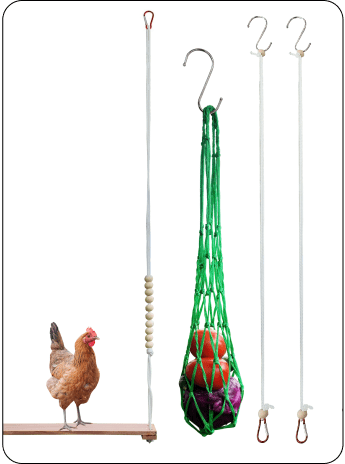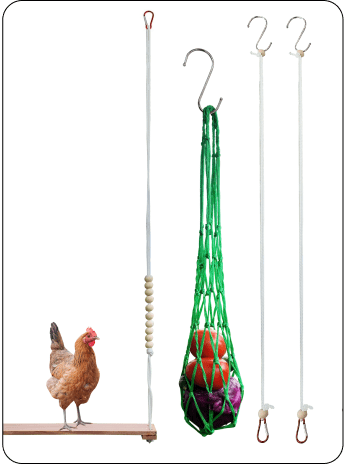Introduction:
Amazon is a major player in the e-commerce industry, and sellers on the platform need to be aware of their competitors in order to succeed. By researching their competitors, sellers can identify opportunities, differentiate their products, and refine their marketing strategies. This blog will provide essential tips for researching Amazon competitors, helping sellers gain a competitive edge and achieve long-term success on the platform.

Why is Competitor Research Important for Amazon Sellers?
Competitor research is important for Amazon sellers for a number of reasons. It can help you:
Identifying Opportunities: Competitor research helps sellers discover areas where they can stand out by offering unique features or services. By analyzing what competitors do well, sellers can find gaps in the market that they can capitalize on.
Product Differentiation: Once opportunities are identified, sellers can use this information to differentiate their products. By focusing on aspects that set them apart, such as improved user experience or superior customer service, they can attract more buyers.
Improving Pricing Strategy: Understanding competitors’ pricing allows sellers to adjust their own prices to stay competitive. They can raise or lower prices strategically based on what the market can bear and what their competitors are doing.
Optimizing Marketing Efforts: Analyzing competitors’ marketing strategies provides valuable insights. Sellers can adopt successful techniques, keywords, or targeting strategies to improve their own marketing campaigns.
Staying Ahead of the Competition: Amazon’s marketplace is dynamic, and competitors are always evolving. Regular competitor research ensures that sellers remain aware of industry changes and maintain their competitive edge.
Identifying Market Trends: By tracking competitors, sellers can identify emerging market trends and demand patterns. This information helps them understand which products are gaining popularity and which ones might be successful in the future.
How to Research Your Amazon Competitors
Identify your competitors:
The first crucial step in competitor research is to identify your competitors. This process is essential as it provides valuable insights into their strengths, weaknesses, pricing, marketing strategies, and overall approach to selling on Amazon.
There are various effective methods to identify your competitors:
Top-Selling Products: Analyze the best-selling products within your category on Amazon. These products are likely to be your direct competitors, as they target a similar customer base.
Competitor Research Tools: Utilize specialized tools like Jungle Scout or Helium 10 to identify other sellers offering products similar to yours. These tools streamline the process and provide comprehensive competitor data.
Audit their product listings:
Auditing your competitors’ product listings is a crucial step in understanding their strategies and gaining valuable insights into the market dynamics. It involves a comprehensive analysis of various elements of their listings, allowing you to identify their strengths, weaknesses, and areas for improvement. Here’s a detailed breakdown of what to look for when auditing your competitors’ product listings:
- Product Descriptions: Examine the quality and clarity of their product descriptions. Are they well-written, informative, and engaging? Look for keywords they are targeting within the descriptions, as this indicates what potential customers are likely to search for when looking for similar products.
- Pricing: Evaluate the pricing of their products. Are their prices competitive or significantly different from your own? Observe if they offer any discounts, promotions, or bundling options. Understanding their pricing strategy can help you make informed decisions about your own pricing to remain competitive in the market.
- Images: Analyze the quality and relevance of their product images. High-quality and visually appealing images can significantly impact customer perception and conversion rates. Pay attention to the number of images they use, angles displayed, and any lifestyle images that demonstrate product use.
- Reviews: Dive into their customer reviews to gauge customer satisfaction and identify pain points or common concerns. Positive reviews indicate areas where they excel, while negative reviews highlight potential areas for improvement. This information is valuable in tailoring your own product offerings and addressing customer needs effectively.
- A+ Content (Enhanced Brand Content):Check if your competitors are utilizing A+ Content on their listings. A+ Content allows sellers with brand registry to create enhanced product descriptions with additional images, charts, and formatted text. This feature can help improve the overall presentation of their products and potentially increase conversion rates and search ranking.
- Unique Selling Proposition (USP): Identify the unique selling points of their products. What sets their offerings apart from others in the market? Understanding their USPs can guide you in refining your own product differentiators and developing a compelling value proposition to attract customers.
- Delivery and Shipping Options: Take note of the delivery and shipping options your competitors provide. Fast and reliable shipping methods can influence customer buying decisions, so consider adjusting your own shipping strategies to stay competitive.
Analyze their targeted keywords:
Keywords play a pivotal role in making your product visible and profitable on Amazon. Conducting thorough keyword research is essential because it answers a critical question: “How are my customers discovering my products?”
By delving into keyword research, you gain valuable insights into customer search behavior and understand how effectively you compare to your competitors. Armed with this knowledge, you can optimize the keywords used in your product listings, significantly increasing the chances of your products being discovered on Amazon.
Given that your competitors are likely targeting similar keywords, refining and fine-tuning your own keyword selection becomes crucial to align with your audience’s search queries on Amazon. Moreover, this research offers a glimpse into the overall demand for your specific product, empowering you with ideas to differentiate and stand out on the platform.
In essence, keyword research acts as a compass, guiding sellers to navigate the vast Amazon marketplace successfully and ensure their products are well-positioned to capture the attention of potential customers and drive profitability.
Evaluate their prices:
Effective pricing plays a significant role in influencing customer purchase behavior, especially on Amazon. When presented with two similar products boasting similar review ratings, customers often lean towards the cheaper option. However, it’s essential to strike a balance between competitive pricing and maintaining profitability.
To ensure a product’s long-term viability, understanding the price history of a particular market is crucial. Frequent fluctuations in the product’s price may indicate an unstable market, making it less favorable for sellers to enter.
Through vigilant monitoring of Buy Box prices and tracking competitors’ adherence to consistent price points for a particular product, sellers gain valuable insights that enable them to make well-informed decisions. By avoiding potential losses and concentrating on products with price stability, sellers can guarantee profitability and foster sustainable growth in their Amazon endeavors. This approach empowers sellers to stay ahead of the ever-changing market dynamics and fine-tune their pricing strategies to align with stable and lucrative opportunities, thus optimizing their chances of achieving success on the platform.
Estimate their monthly sales:
Estimating your competitors’ monthly sales is a valuable exercise for Amazon sellers as it provides essential insights into market demand, product popularity, and the overall competitive landscape. Accurate sales estimations allow sellers to set realistic sales goals, strategize effectively, and identify potential opportunities for growth and competition.
Here are several methods to estimate your competitors' monthly sales:
Amazon Best Seller Rank (BSR):
The Amazon Best Seller Rank is a metric that reflects a product’s performance in its respective category. Lower BSRs indicate higher sales volume, while higher BSRs suggest lower sales. By monitoring your competitors’ BSRs, you can gauge how well their products are selling relative to others in the same category.
Reviews and Ratings:
The number of reviews a product has is often indicative of its sales volume. More reviews typically suggest higher sales, as satisfied customers are more likely to leave feedback. Additionally, observing the overall sentiment of reviews can help identify the product’s reception among customers.
Restocking Frequency:
Products that sell well tend to require more frequent restocking. Monitoring how often your competitors restock their inventory can provide a sense of their sales velocity and success in the marketplace.
Market Research Tools:
There are specialized tools like Jungle Scout, Helium 10, and AMZScout that utilize various data points, including BSR, reviews, and restocks, to estimate competitors’ monthly sales. These tools offer more sophisticated and data-driven estimations compared to manual methods.
It is crucial to recognize that estimating competitors’ sales is an approximation and not an exact science. Several factors can influence the accuracy of these estimates, such as seasonality, promotions, and changes in the competitive landscape. Additionally, sales estimations may vary for each individual product variation or SKU.
Look into their marketing strategies:
Understanding your competitors’ marketing strategies is a pivotal aspect of competitor research. By analyzing their successful approaches and learning from their mistakes, you can shape a more effective marketing plan for your own products. Examining the channels they use, the content they create, their goals, and measurement metrics provides valuable insights to refine your messaging, target the right audience, and allocate resources more efficiently. Continuous monitoring of competitors’ marketing efforts helps you stay agile, adapt to market dynamics, and gain a competitive edge on Amazon, leading to improved customer engagement and increased sales potential.
Competitor research should be an ongoing process, as the Amazon marketplace is dynamic, and competitors’ strategies evolve over time. By staying informed and vigilant, you can adapt your approach and stay ahead in the competitive landscape, enhancing your chances of success on Amazon.









